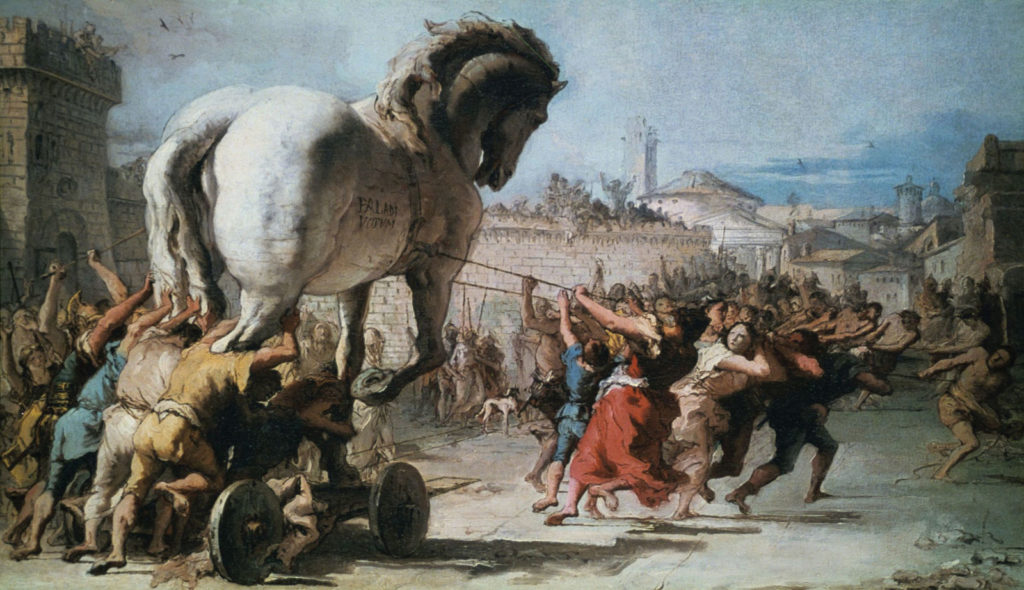
A son of Deucalion, and grandson of Minos and Pasiphae; and hence he traced his pedigree to Zeus and Helios.
He was a man of great beauty, and is mentioned among the suitors of Helen. (Hon. Il. xiii. 450, &c., Od. xix. 181; Paus. v. 25. 5; Apollod. iii. 3. §; Dict. Cret. i. 1; Hygin. Fab. 81.) He is sometimes called Lyctius or Cnosius, from the Cretan towns of Lyctus and Cnosus. (Virg. Aen. iii. 400; Diod. v. 79.)
In conjunction with Meriones, the son of his half-brother Molus, he led the Cretans in 80 ships against Troy, and was one of the bravest heroes in the Trojan war.
He offered to fight with Hector, and distinguished himself especially in the battle near the ships, where he slew several Trojans. (Hom. Il. ii. 645, &c., iii. 230, iv. 251, v. 43, vii. 165, xiii. 361, &c., xvi. 345.) Philostratus (Her. 7) even relates that while the Greek heroes were waiting at Aulis, Cretan ambassadors came to Agamemnon to announce that Idomeneus would join him with one hundred Cretan ships, if Agamemnon would share the supreme command with him.
After the fall of Troy, Idomeneus returned home in safety (Hom. Od. iii. 1.91; Diod. v. 79), though the post-Homeric traditions inform us that once in a storm he vowed to Poseidon to sacrifice to him whatever he should meet first on his landing, if the god would grant him a safe return. The first person he met on landing was his own son.
He accordingly sacrificed his son; and as Crete was thereupon visited by a plague, the Cretans expelled Idomeneus.
He went to Italy, where he settled in Calabria, and built a temple to Athena. From thence he is said to have again migrated to Colophon, on the coast of Asia, to have settled near the temple of the Clarian Apollo, and to have been buried on Mount Cercaphus. (Serv. ad Aen. iii. 121, 401, 531, xi. 264 ; Strab. x. p. 479; Schol. ad Hom. Od. xiii. 259.)
At Olympia his statue, the work of Onatas, stood among the images of those who drew lots as to who was to fight with Hector, and on his shield a cock was represented. (Paus. v. 25. § 5; comp. Hom. Il. vii. 161, &c.) His tomb was shown at Cnosus, where he and Meriones were worshipped as heroes. (Diod. v. 79.)
